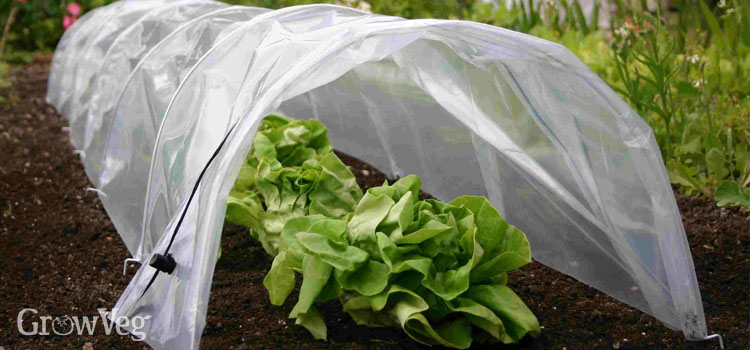There is no definitive answer to this question as it depends on the type of vegetables you are growing and your personal preferences. Some gardeners find that their plants do better in cooler temperatures, while others find that they produce more fruit or vegetables when it is hotter. Ultimately, it is up to you to decide what temperature range works best for your garden.
However, if you are growing delicate plants or ones that are not frost-tolerant, you will need to take extra care to protect them from the cold.
When it comes to gardening, there are a lot of different opinions on what is considered too cold. Some people say that as long as the temperature is above freezing, your plants will be fine. Others believe that anything below 50 degrees Fahrenheit is too cold for most vegetables.
So, how do you know if it’s too cold for your garden? The best way to determine this is by paying attention to your plants. If they seem wilted or stunted, then it’s probably too cold for them.
You can also try using a soil thermometer to get a more accurate reading.
If you’re not sure whether or not it’s too cold for your garden, err on the side of caution and wait until the temperatures start to warm up before planting anything. After all, it’s better to be safe than sorry!
Transplanting Tomatoes – How cold is too cold?
Are Vegetables Ok in 40 Degree Weather?
It’s not ideal, but vegetables are generally OK in 40 degree weather. They may not be as fresh and crisp as they would be in cooler weather, but they should still be edible. If you’re concerned about the quality of your vegetables, it’s best to err on the side of caution and eat them sooner rather than later.
What Vegetables Can Grow in 40 Degree Weather?
When it comes to vegetables, there are a wide variety that can withstand cooler temperatures – even as low as 40 degrees. This means that you can still enjoy fresh, homegrown produce even in the colder months. So, what vegetables can you grow in 40 degree weather?
Some of the best options include:
-Kale
-Spinach
-Chard
-Lettuce
-Collards
-Mustard greens
-Cabbage
These leafy greens are all tolerant of cooler weather and will still thrive even when temperatures dip.
They’re also packed full of nutrients, making them a great addition to your diet no matter what time of year it is.
Other vegetables that do well in cooler weather include:
-Broccoli
-Carrots
-Beets
These veggies may not be quite as hardy as the leafy greens mentioned above, but they can still hold their own in cooler temperatures.
Just make sure to give them a little extra protection if the forecast calls for frost or snow.
So, there you have it! A few of the best vegetables to grow in 40 degree weather. With such a wide variety available, there’s no reason not to enjoy fresh produce all year long!
Can Zucchini Survive 40 Degree Weather?
Zucchini is a heat-loving vegetable, so it’s not surprising that it can withstand temperatures as low as 40 degrees Fahrenheit. In fact, zucchini plants can even continue to produce fruit at these lower temperatures. However, if the weather dips below 40 degrees for an extended period of time, the plants may start to experience some stress and the fruits may not be as bountiful.
If you’re worried about your zucchini plants surviving a cold snap, you can take some preventive measures to help them out. For example, covering the plants with a fleece or row cover will protect them from frost damage. You can also mulch around the base of the plant to insulate its roots.
With a little care and attention, your zucchini plants should be able to survive even the coolest weather.
Can Vegetable Plants Survive 45 Degree Weather?
When it comes to plants and cold weather, there is a general rule of thumb: the lower the temperature, the more likely it is that plants will be damaged. However, there are some vegetables that can withstand colder temperatures better than others. Here is a list of vegetables that can survive 45 degree weather:
-Potatoes
-Carrots
-Beets
-Parsnips
-Turnips
-Rutabagas
-Kohlrabi
-Collards
-Cabbage
-Broccoli
These vegetables are all members of the brassica family, which is known for its ability to tolerate cold weather. In fact, many of these vegetables actually prefer cool weather and will actually taste sweeter after a frost.
So if you’re looking to add some winter flavor to your dishes, consider planting some of these hardy veggies in your garden.

Credit: www.growveg.com
Signs Plants are Too Cold
If your plants are wilting, yellowing, or otherwise looking unhealthy, it might be a sign that they’re too cold. Here are a few other signs to look for:
-The leaves of your plant are brittle and/or discolored.
-Your plant is not growing as quickly as it should be.
-The stems of your plant are thin and weak.
If you suspect that your plants might be too cold, there are a few things you can do to help them out.
First, try moving them to a warmer location. If that’s not possible, you can try covering them with a blanket or newspaper at night to help trap in heat. Finally, make sure they’re getting enough water – cold weather can cause the soil to dry out more quickly than usual.
Is 45 Degrees Too Cold for Vegetable Plants
If you’re wondering whether 45 degrees is too cold for your vegetable plants, the answer is: it depends. Some vegetables, such as peas and spinach, can tolerate cooler temperatures and even thrive in cooler weather. Other vegetables, such as tomatoes and peppers, are much more sensitive to cold and should only be planted when the weather is warm.
So if you’re thinking about planting some veggies in early spring, make sure to do your research first to find out which ones will do well in cooler temperatures. And if the forecast calls for a sudden drop in temperature, it’s always best to err on the side of caution and wait until things warm up again before planting.
What Temperature is Too Cold for Potted Plants
Winter is a tough time for gardeners. We are constantly battling the cold weather, trying to keep our plants alive and healthy. But what temperature is too cold for potted plants?
The answer to this question depends on the plant species. Some plants can tolerate colder temperatures than others. For example, succulents and cacti are well-suited for colder climates, while tropical plants prefer warmer temperatures.
In general, most potted plants should be kept above freezing (32 degrees Fahrenheit). If the temperature dips below freezing, the plant’s roots could be damaged or killed. This can cause the plant to wilt and die.
If you are unsure about whether your plant can tolerate cold temperatures, it is always best to err on the side of caution and bring it indoors or provide some extra insulation (such as a blanket or burlap wrap). By taking these precautions, you can help ensure your plants make it through the winter unscathed.
Conclusion
If you’re thinking about starting a vegetable garden, you may be wondering how cold is too cold. The answer depends on the type of vegetables you want to grow. Some vegetables, like peas and spinach, can tolerate colder temperatures and can even be planted as early as two weeks before the last frost date.
Other vegetables, like tomatoes and peppers, need warm weather to thrive and should not be planted until after the last frost date. Soil temperature is also important for seed germination, so make sure to check that before planting your seeds. If it’s too cold outside, you can always start your vegetable garden indoors under grow lights.
